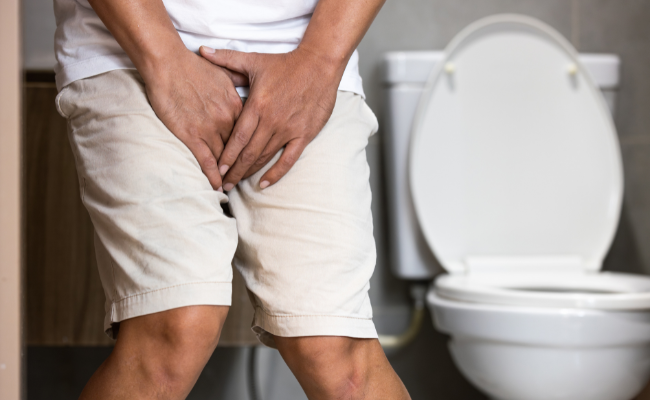How to Treat Interstitial Cystitis?
- December 21, 2023
- No Comments

What is Interstitial Cystitis?
Interstitial Cystitis (IC), commonly known as painful bladder syndrome, is a persistent and complex condition causing discomfort or pain in the bladder and the surrounding pelvic region. This chronic ailment primarily affects the bladder's lining, resulting in symptoms that significantly impact an individual's daily life. These symptoms encompass frequent urination, urgency, pelvic pain, and discomfort during sexual intercourse. The challenging aspect of IC lies in its elusive nature, as the precise cause remains unclear, and a definitive cure is yet to be found.
Furthermore, the term Bladder Pain Syndrome, denoted as interstitial cystitis (IC/BPS), describes a condition marked by enduring pain, pressure, or discomfort in the suprapubic region, which includes the bladder area. This syndrome is characterized by heightened urinary frequency and sudden urges to urinate, persisting for a minimum of six weeks. The dual nomenclatures highlight the persistence and complexity of this condition, underlining the ongoing challenges in understanding and effectively treating interstitial cystitis.
Why is Interstitial Cystitis Challenging?
The challenge in managing interstitial cystitis stems from its multifaceted and complex nature. The elusive causes of IC make it difficult for healthcare professionals to pinpoint a specific treatment approach that works universally for all patients. While various theories attempt to explain the origins of IC, including inflammation, abnormalities in the bladder lining, and an overactive immune response, the lack of a clear etiology adds to the difficulty in developing targeted therapies. Additionally, the symptoms of IC can vary widely among individuals, further complicating the diagnostic and treatment processes.
How to Identify Interstitial Cystitis?
- Identifying interstitial cystitis involves a comprehensive approach that includes a thorough examination of symptoms, medical history, and diagnostic tests. Common symptoms that raise suspicion of IC include a frequent need to urinate, urgency (a sudden and compelling need to urinate), pressure or pain in the bladder or pelvic area, and discomfort or pain during sexual intercourse. However, these symptoms can overlap with other conditions, necessitating a detailed evaluation.
- Diagnostic tests commonly employed to identify interstitial cystitis may include a urine culture to rule out urinary tract infections, a cystoscopy to directly visualize the bladder lining, and urodynamic studies to assess bladder function. These tests help healthcare professionals rule out other potential causes for the symptoms and confirm the presence of IC.
Treatment Solutions for Interstitial Cystitis
Medications:
- Antihistamines: Some individuals with IC find relief from antihistamines, which may help control inflammation and reduce symptoms.
- Pentosan Polysulfate Sodium (Elmiron): This medication is FDA-approved for treating IC and works by restoring the protective lining of the bladder.
Bladder Instillations:
Dimethyl Sulfoxide (DMSO): Administered directly into the bladder, DMSO may reduce inflammation and alleviate symptoms. This procedure is typically performed in a healthcare setting.
Physical Therapy:
Pelvic Floor Physical Therapy: Targeting the muscles surrounding the bladder, this therapy aims to reduce pelvic pain and improve bladder function through exercises, stretches, and relaxation techniques.
Dietary Changes:
Avoiding Trigger Foods: Certain foods and beverages, such as spicy foods, caffeine, and acidic fruits, may exacerbate IC symptoms. Adjusting the diet to eliminate these triggers can be beneficial.
Bladder Training:
Scheduled Voiding: Establishing a regular schedule for bathroom breaks helps retrain the bladder, reducing urgency and frequency.
Nerve Stimulation:
Transcutaneous Electrical Nerve Stimulation (TENS): This therapy involves applying electrical impulses to specific nerves to modulate pain signals and alleviate symptoms.
Hydrodistention:
Bladder Stretching: Hydrodistention is a procedure in which the bladder is filled with fluid to stretch and expand it. This may help improve symptoms, although the effects are often temporary.
Benefits of Interstitial Cystitis Treatment
- Symptom Management: Effective treatment strategies can significantly reduce the severity of IC symptoms, providing relief from pain, urgency, and frequency.
- Improved Quality of Life: By addressing the physical and emotional aspects of IC, individuals can experience an enhanced quality of life, allowing them to engage in daily activities with greater ease.
- Prevention of Complications: Timely and appropriate treatment helps prevent complications associated with untreated IC, such as urinary tract infections and bladder damage.
- Customized Approach: Since there is no universal cure for IC, the benefit of treatment lies in the ability to tailor interventions to an individual's specific symptoms and needs.
- Enhanced Emotional Well-being: Managing IC through a combination of treatments can alleviate the emotional burden associated with chronic pain, improving mental health and overall well-being.
Comments (0)